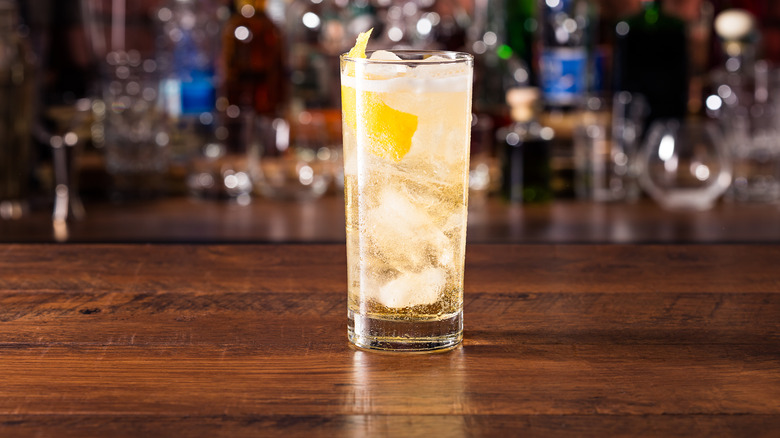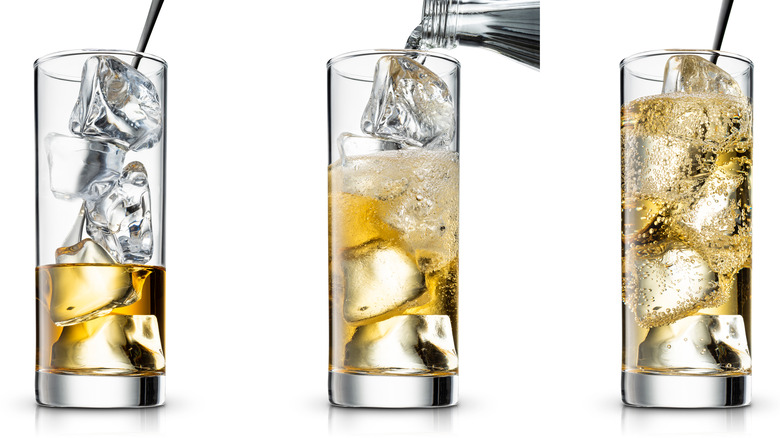The Debated Origins Of The Term 'Highball'
"Highball" can refer to a lot of things — and we're not talking about some sort of sports ball here. According to Chilled Magazine, highballs are some of the most popular drinks ordered at bars, partly because they're so simple. Tall and refreshing, a highball is any mixture of spirit, mixer, and ice in a Collins glass.
These pour-and-serve beverages include gin (Tom Collins), rum (Dark and Stormy), tequila (Paloma), vodka (Bloody Mary, Moscow Mule, Screwdriver), and whiskey (Seven and Seven) highballs. They can even consist of more than one kind of alcohol, like the Black and Tan with Guinness Stout and pale ale or the Long Island Iced Tea with its five different liquors. Oftentimes, though, when people order a "highball," they specifically want whiskey in their cup.
Highballs have a fascinating history in the western world. However, we'd be remiss to not at least mention the Japanese highball cocktail (via Provi). The drink was all the rage in Japan during the '60s and '70s, when it was seen as a luxury among businessmen able to afford the beverage. Ready-to-drink cocktails replaced them in popularity during the '80s and '90s, and it wasn't until the 2000s that highballs rose back to prominence in the island nation, where they're presently treated as works of art.
Given all of this interesting history, you might wonder a fairly obvious question: Where did the term "highball" come from in the first place?
History of the highball
The whiskey highball drink itself dates back a little further than the name. According to Provi, artificially "sparkling" beverages were first developed in England in the late 17th century. Eventually, the Brits tried mixing sparkling water with whiskey, and highballs by some other name first took shape. In the late 1800s, ice became widely available, and so, the cocktail found its ideal form.
It was around this same time that "highball" was first documented as a name for the beverage. According to Difford's Guide, the oldest record of the moniker dates back to an 1894 play where one character asks another to bring them a highball whiskey drink. Interestingly, there are competing claims for where "highball" actually originates.
Vine Pair notes that the Adams House in Boston wrote an editorial for the New York Times, claiming the drink as their own. In response, Patrick Duffy, a former barkeeper of the Ashland House in Manhattan, chronicled his own tale of supplying scotch and sodas to an English actor, who originally dubbed them "highballs." In another story, Tommy Dewar declared he invented the name when asking for taller glasses upon ordering whiskey sodas because he wished to 'have a ball' while drinking.
There are also rumors that "highball" was inspired by spherical pieces of equipment on trains or even by golf balls at an Irish club where whiskey was served. In fact, the truth behind highballs' namesake is difficult to determine. It's ironic, right? One of the most basic cocktails has one of the most complicated tangles of backstories!

